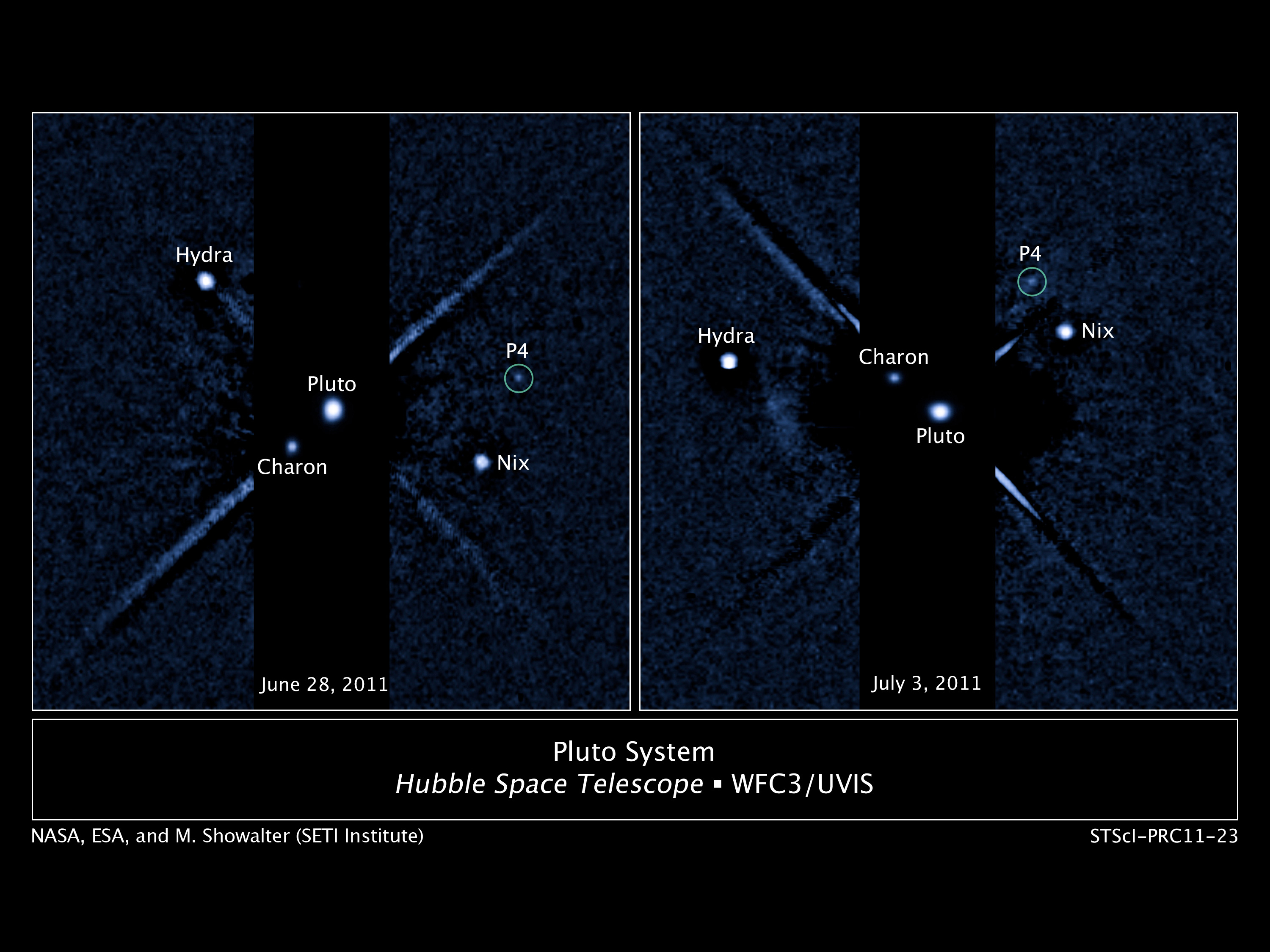The Hubble Space Telescope discovered this fourth moon, cleverly designated P4, and astronomers say this newest, smallest one has an estimated diameter of 8 to 21 miles. By comparison, Charon, Pluto's largest moon, is 648 miles (1,043 km) across, and the other moons, Nix and Hydra, are in the range of 20 to 70 miles in diameter (32 to 113 km).
Distance: 3 billion miles.
The finding is interesting given NASA's New Horizons mission, scheduled to fly through the Pluto system in 2015. The new moon is located between the orbits of Nix and Hydra, which Hubble discovered in 2005. Charon was discovered in 1978 at the U.S. Naval Observatory and first resolved using Hubble in 1990 as a separate body from Pluto.

CLICK FOR LARGER SIZE. Two labeled images of the Pluto system taken by the Hubble Space Telescope's Wide Field Camera 3 ultraviolet visible instrument with newly discovered fourth moon P4 circled. The image on the left was taken on June 28, 2011. The image of the right was taken on July 3, 2011. Credit: NASA, ESA, and M. Showalter (SETI institute)
Pluto's moon system is believed to have formed by a collision between Pluto and another planet-sized body early in the history of the solar system. The collision flung material that coalesced into the family of satellites observed around Pluto.
Lunar rocks returned to Earth from the Apollo missions led to the theory that our moon was the result of a similar collision between Earth and a Mars-sized body 4.4 billion years ago. Scientists believe material blasted off Pluto's moons by micro-meteoroid impacts may form rings around the dwarf planet, but the Hubble photographs have not detected any so far.
P4 was first seen in a photo taken with Hubble's Wide Field Camera 3 on June 28. It was confirmed in subsequent Hubble pictures taken on July 3 and July 18. The moon was not seen in earlier Hubble images because the exposure times were shorter. There is a chance it appeared as a very faint smudge in 2006 images, but was overlooked because it was obscured.





Comments